- Administrator
- Albums and Singles
 The latest release from Matthew Bower’s Skullflower crushes all the competition. Making very rough rhythms and drones from slabs of noise, Bower has put together one titan of an album. The noise he evokes rakes out my ears like few others do.
The latest release from Matthew Bower’s Skullflower crushes all the competition. Making very rough rhythms and drones from slabs of noise, Bower has put together one titan of an album. The noise he evokes rakes out my ears like few others do.
Crucial Blast
Starting off with the pretentiously titled “Lost in the Blackened Gardens of Some Vast Star,” Tribulation begins like a kick to the face and keeps kicking. Bower uses the bare minimum rock setup of guitars and drums to make his compositions, but it’s hard to tell as there is so much distortion and dirt all over the music that it all forms one black mess. (It’s a glorious black mess however.) Sometimes, like on this first track it is possible to hear bits of guitar squawk through the layers of feedback but most of the time the wall of sound is all consuming. Like an awful lot of noise releases, Bower shows a strong metal influence. “Black Wind” has a black metal tinged riff repeating through it while tons of feedback creates the black wind of the title. Black metal always strives for icy coldness but rarely achieves it, when I play this piece, the temperature drops in the room.
One thing that isn’t quite annoying but is a little irksome is the way that all of the pieces just stop at the end and immediately the next piece begins. After the eight minutes of aural assault of the title track I am only beginning to get into a good trance when (the admittedly awesome) “Void of Roses” all of a sudden begins at a different volume, knocking me back into consciousness. This is probably intentional, lulling the listener into a comfort zone and pulling the chair out from under them.
The music is disorientating and overwhelming as Bower makes good use of stereo, channelling different sounds into different ears and at different volumes. On headphones many of the pieces have a much stronger impact; the sounds coming in at different levels resulted in me cocking my head to one side like I had a creak in my neck. The dizzying array of noises on offer makes each listen sound as fresh as the first. Even within one piece Bower utilises a wide range of sounds. For example there are three main elements to “Dwarf Thunderbolt:” a slow and doom laden guitar, a wall of shrieking feedback and what sounds like a piano being demolished. Any combination of two of these elements would have made a powerful piece on their own but the three together is tremendous.
One thing that struck me about Tribulation is that as overwhelming as it is, it is never overbearing. After many noise albums I want to put on something a little more sedate but when this album finishes I’m ready to go again after a short break. This is a fantastic album and definitely one of the best from Skullflower.
samples:
Read More
- Administrator
- Albums and Singles
 I started keeping a list of random ideas and sounds in the newestKattoo record because by the fourth track, the record was already goingall over the place. I'm a huge fan of sample-based music and thekitchen sink approach to constructing records usuallyworks, but here it plays like a hackneyed collection of obviousinfluences that don't add up to anything greater.
I started keeping a list of random ideas and sounds in the newestKattoo record because by the fourth track, the record was already goingall over the place. I'm a huge fan of sample-based music and thekitchen sink approach to constructing records usuallyworks, but here it plays like a hackneyed collection of obviousinfluences that don't add up to anything greater.Hymen
The opening track is a melodramatic piece of orchestra music played allby the canned synths that plague the entire record. People learned inthe '70s that synthesizers made to simulate acousticinstruments were more interesting when they were just being used tomake their own weird sounds, but that's something Kattoo still hasn'tfigured out.
Some of the arrangements are touching and themelodies can be pretty hook-filled, but they are all hamstrung by synthpresets. Electric piano is flat and drenched in reverb so that itsounds almost exactly like the piano tones in Windows XP that tell youwhen an application is finished installing. Strings and synth brass(does anyone seriously try to get away with synth brass these days?)are excruciating and while the songs might have been great had theybeen recorded by a real orchestra, Kattoo seems not to have thatluxury.
Movie samples dot the record and add texture andoccassionally meaning, but they never sew the songs together intoanything cohesive. The effect usually comes off like someone adding Aliensdialogue over a new age record which sounds like the kind ofexperiments everyone I knew with a sampler and a love of Wax Trax werebanging out in 1992.
When there are beats to break up themovie-score melodrama, they are either pulled from the same cannedcollection as the synth patches or cut up in an annoying way in anattempt to posture as contemporary. Take away some of the buzz rollsand micro-edits and you have an Enigma B-Side collection here, onlywith less interesting instrumentation.
When the samples aren'tobvious and overly indicative of the genre aesthetic to which Kattooseems tied, they are so completely out of any context that it sounds asif the author is simply passing through channels on a TV and capturingwhatever bit of randomness catches his fancy. I swear there's even abit of the Alien 3 score lifted or re-created here. Kattoo's haphazard approach tries to throw samples from Logan's Run,anime dialogue, beatboxing, middle eastern melodies, and war moviesound bytes together and if it were trying to be funny, it might justwork. Unfortunately, there's no obvious tongue in Kattoo's cheek.
Read More
- Administrator
- Albums and Singles
 Jazzfinger's openness to sounds and attention to emotion, minimalism and fluidity contradicts and even somehow incomprehensibly dismisses their defiantly lo-fi two-track sound.
Jazzfinger's openness to sounds and attention to emotion, minimalism and fluidity contradicts and even somehow incomprehensibly dismisses their defiantly lo-fi two-track sound.
The balance of distance, depth and intimacy that seems to delicately merge within the songs is also evident on the LP's magnificent extended card packaging. These almost biological alpenglow hallucinogenic watery images are almost like looking down into some hyper-psychedelic liquid abyss, plus it towers above the rest of my CD collection so it's hard to ignore.
 
 
 
 
 
Read More
- Administrator
- Albums and Singles
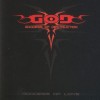 Nikkie Van Lierop changes her look, her style and her name withvirtually every project she's part of. In the brief and inbredBelgian "New Beat" scene she was "Jade4U," singing and sharingcomposition and production duties in Lords of Acid and 101. Thenshe became the darling of European ravers as part of Digital Orgasm,Praga Khan's entourage, and the production company MNO. As"Darling Nikkie" she released a solo album with an ecclectic mix of'40s crooning, electronic dance and bare-faced spiritualintrospection. She either has a short attention span or a love ofvariety...whether all of this band-switching has helped her career,however, is up for debate.
Nikkie Van Lierop changes her look, her style and her name withvirtually every project she's part of. In the brief and inbredBelgian "New Beat" scene she was "Jade4U," singing and sharingcomposition and production duties in Lords of Acid and 101. Thenshe became the darling of European ravers as part of Digital Orgasm,Praga Khan's entourage, and the production company MNO. As"Darling Nikkie" she released a solo album with an ecclectic mix of'40s crooning, electronic dance and bare-faced spiritualintrospection. She either has a short attention span or a love ofvariety...whether all of this band-switching has helped her career,however, is up for debate.www.goddessofdestruction.com
When she retreated briefly to have a child and spend some time being amom, I worried that she'd return with a bloated album of bland,acoustic tributes to the joys of a baby's smile and the fertility ofher womb. Would Nikkie Van Lierop lose her innovative edge? Would she become a sweetness-and-light stereotype? Would her nextincarnation be a thoroughly embarassing "Goddess of Childrearing?"
No indeed! As vulcan-eared superhero "Cornelia RedStone" (!) shehas become "Goddess of Destruction," and this is her harshest projectyet. In the video clip "To the Limit," she, and barely-audiblebackup-singer Lucy Dark, enter a post-apocalyptic arena, postureaggressively at a bunch of beer-bellied bikers, and then beat up somepoor guy who has barbed-wire wrapped around his head. Keepingwith this theme, many of the album's songs have a "deal with it or getthe hell out" sound to them, where RedStone makes "wrongers" pay fortheir multitude of crimes: spousal abuse, greed, deception, and...well,Elvis impersonation. That last one is a particularly heinousoffense in my book, Max...go get 'em.
Leaving the "I am Cornelia RedStone from Planet Xylox" piece of cheese behind, Goddess of Loveis as strong, punchy and nasty an album as its "beyond Thunderdrome"video promises. Van Lierop is a creative programmer who knows howto keep you interested, and her keyboards are as fat and fuzzy as aballsy autumn caterpillar. Her production is virtually flawless,and her voice has lost none of its repetoir; she can pull off the nastygrowls of "Addicted To Sin" and "Goddess of Insanity," as well as theoperatic sweetness of "Soulmate," the repetitive rave-yelling of "Tothe Limit" and the R&B diva vocals on "Behind Smiles" withoutbatting a single spooky eyelash.
There are certainly cringe-worthy moments here: as on her past soloalbum there are times when her voice self-destructs on the highernotes, the lack of irony in the lyrics can make them painfully sincere,sometimes the production gets a bit TOO wacky, and the guestguitarist's licks are perilously close to cheap classic rock. Butthe overall album is made up of solid songwriting, conception,performance and production. I can dance to Goddess of Love AND I can sit quietly and enjoy it.
After heaping all this praise on the album I have to wonder: will VanLierop finally get her due now? Is it basic sexism that's kepther from rising as high as she should have? I'm hopeful thistime...I'm pretty sure that the ecclectisim of her last album kept itfrom really catching on, but Goddess of Love, while still retaining some of that variety, is a bit more comforting in its electronic rawk consistency.
Most importantly, though, it's not about breast-feeding or buying baby togs and that alone is a blessing...thanks, Goddess!
samples:
Read More
- Administrator
- Albums and Singles
The greatest heavy metal story ever told—the complete tale of a life lived for metal. Part anthology, part memoir, and years in the making, METALION includes over 600 reproduction pages from every issue of Slayer Mag—Slayer 1 through Slayer XX, plus the precursor Live Wire zine—spanning from the early 1980s through 2010. In addition, author Jon Kristiansen recounts his life’s story, from alienated outsider to central figure in Norwegian black metal to metal party beast to world-weary metal survivor. The book also features over 100 rare photographs, including two color sections and a portrait gallery of photographs taken by Kristiansen himself.
For twenty-five years, Norway’s Slayer Mag published the gospel of black metal and death metal, combining eye-ripping graphics, brutally honest writing, and relentless offbeat humor. With this anthology/memoir, editor Jon “Metalion” Kristiansen unfolds the extreme highs and lows of a life lived for heavy metal. Founded in 1985 in Sarpsborg, Norway, Slayer Mag quickly rose to prominence by championing countless unsigned death metal pioneers. The pages of Slayer Mag exploded along with the extreme metal underground, and as black metal rose to prominence in Norway in the 1990s, Slayer Mag remained the final word on the moods and motivations of those dark times.
The astonishing combination of archival material includes scores of key historic interviews with the most revered figures in extreme metal, including Mayhem, Emperor, Slayer, Kreator, Nihilist, Celtic Frost, Bathory, Cathedral, Entombed, Morbid, Napalm Death, Metallica, Opeth, Cradle of Filth, Sadistik Execution, Usurper, Nifelheim, Darkthrone, Sodom, Destruction, Morbid Angel, Deicide, Exodus, Dissection, Candlemass, Carcass, Sepultura, Gorgoroth, Death, Watain, Sadus, Satyricon, Enslaved, Pentagram, Jarboe, Immortal, Possessed, Overkill, Ulver, Dark Angel, and countless others.
“From the start, I made Slayer Mag as honestly and as well as I could,” says Kristiansen. “I never knew any other way. I hope that I have produced something that will stand the test of time.”
“Presiding over the birth of extreme metal from its Scandinavian heartland, the first issue of the legendary Slayer fanzine was cranked out in 1985 and over the years shifted its coverage to provide an insider view of Swedish death metal and Norwegian black metal through their formative and most controversial years.”—Terrorizer
“For countless metalheads, the zine Slayer was a lifeline to a global scene. Founder Jon Kristiansen was deep into the scene in Norway, and is, to this day, one of the best primary sources for facts and stories about Mayhem, Varg, and what really happened back in the day.”—The Onion AV Club
More info here.

Read More
- Administrator
- Albums and Singles
 Dutch experimental label/store Staalplaat has a new series in collaboration with the Extrapool art space called Brombron. For the first installment they invited Robert Hampson (Main), David Howell and Alastair Leslie (who make up Antenna Farm) to spend some time together making strange sounds. The results are scattered here, but never dull. The five-track CD does not list song titles, but presents pictures of the final song waveforms taken from the mastering program used to finish this disc off, and that nicely sums up what the music is all about, too. There's little apparent direction here, mostly just collages of found sounds, digitally spliced together and packaged in a beautifully simple all paper sleeve that folds in on itself like the sources of the sounds the disc contains. It's nearly impossible to tell what is making the odd creaks and clicks and knocks here, but I can visualize the musicians walking about the art space, contact mics in hand, with the kind of giddy wonderment that a child who has first discovered a tape recorder might have. While the completed compositions are far from playful in tone, they do represent a kind of 'throw caution to the wind' sort of approach to realizing the acoustic properties of the discreet time spent together in a designated space. This may not hold the interest of old school Main fans who appreciated Hampson's song-based approach to deconstructing sound; there are no basslines or melodies or even songs here. This is like the equivalent of listening to the architechture of the Extrapool, and from the sound of it, it's a place worth a visit.
Dutch experimental label/store Staalplaat has a new series in collaboration with the Extrapool art space called Brombron. For the first installment they invited Robert Hampson (Main), David Howell and Alastair Leslie (who make up Antenna Farm) to spend some time together making strange sounds. The results are scattered here, but never dull. The five-track CD does not list song titles, but presents pictures of the final song waveforms taken from the mastering program used to finish this disc off, and that nicely sums up what the music is all about, too. There's little apparent direction here, mostly just collages of found sounds, digitally spliced together and packaged in a beautifully simple all paper sleeve that folds in on itself like the sources of the sounds the disc contains. It's nearly impossible to tell what is making the odd creaks and clicks and knocks here, but I can visualize the musicians walking about the art space, contact mics in hand, with the kind of giddy wonderment that a child who has first discovered a tape recorder might have. While the completed compositions are far from playful in tone, they do represent a kind of 'throw caution to the wind' sort of approach to realizing the acoustic properties of the discreet time spent together in a designated space. This may not hold the interest of old school Main fans who appreciated Hampson's song-based approach to deconstructing sound; there are no basslines or melodies or even songs here. This is like the equivalent of listening to the architechture of the Extrapool, and from the sound of it, it's a place worth a visit.Read More
- Administrator
- Albums and Singles
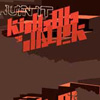 The pairing of Kid606 and Dälek isn't something that makes immediate sense to me on paper. 606 is known for most for his full throttle laptop cutups, glitchery and appropriation of hip hop as one of a myriad source files to be mashed into his digital melee. On the other hand, Dälek fuse experimental rock and electronics, but somehow grind out real hip hop without any sense of irony or 'look how cool this Missy Elliot sample sounds' tongue-in-cheek humor. However, the musical match-up works well on this EP from Tigerbeat6, further demonstrating that neither artist in the equation here is pinned down to a particular MO. Dälek's contributions from the straight-ahead rap on the Dälek remix to the thick drones of dirty sounds on the original mesh well with Kid606's short-attention span approach to songcraft. 606 seems to take the Dälek material seriously, and with the CD bonus track "Vague Recollection," there's even a reflective moment of pause that recalls equal amounts of the Kid's 'Soccer Girl EP' and Dälek's beat-less live ambiance. Kid606's own remixes of the "Ruin It" track provides the anticipated cut up beats, tiny noises, non-linear structure, and fractured groove that most of his beat-oriented work is like, but it takes the Dälek version to ground the song and really pull it back to earth with a simple head-nodding beat that thunders over the washed out noise beneath. The second CD bonus track, "Satan's Hard Drive," is a recording of Kid606's hard drive failing, a cacophany that almost anyone who's worked with digital audio for any length of time can appreciate, but a track that on its own, holds very little interest other than wonder at the failure of machines.
The pairing of Kid606 and Dälek isn't something that makes immediate sense to me on paper. 606 is known for most for his full throttle laptop cutups, glitchery and appropriation of hip hop as one of a myriad source files to be mashed into his digital melee. On the other hand, Dälek fuse experimental rock and electronics, but somehow grind out real hip hop without any sense of irony or 'look how cool this Missy Elliot sample sounds' tongue-in-cheek humor. However, the musical match-up works well on this EP from Tigerbeat6, further demonstrating that neither artist in the equation here is pinned down to a particular MO. Dälek's contributions from the straight-ahead rap on the Dälek remix to the thick drones of dirty sounds on the original mesh well with Kid606's short-attention span approach to songcraft. 606 seems to take the Dälek material seriously, and with the CD bonus track "Vague Recollection," there's even a reflective moment of pause that recalls equal amounts of the Kid's 'Soccer Girl EP' and Dälek's beat-less live ambiance. Kid606's own remixes of the "Ruin It" track provides the anticipated cut up beats, tiny noises, non-linear structure, and fractured groove that most of his beat-oriented work is like, but it takes the Dälek version to ground the song and really pull it back to earth with a simple head-nodding beat that thunders over the washed out noise beneath. The second CD bonus track, "Satan's Hard Drive," is a recording of Kid606's hard drive failing, a cacophany that almost anyone who's worked with digital audio for any length of time can appreciate, but a track that on its own, holds very little interest other than wonder at the failure of machines. Read More
- Administrator
- Albums and Singles

Available to order now: www.underthespire.co.uk
Artist:Steven Hess + Christopher McFall
Title: The Inescapable Fox
Cat#: Spire 043
Edition of 200 vinyl LP's.
“I think I speak for Steven and I both when I make mention of the fact that a great deal of the
materials used to create this release stemmed from a mutual interest in working with taped (analog)
recordings. So, when we began working together we started by sending analog recordings back and
forth by mail. Most of my recordings are done on treated tape, whereby the binder material is
subjected to hydrolysis prior to the recording phase. Steven recorded some of the more
sound/precussive elements for the inescapable fox on some of my tapes and his as well. He sent
them to me and I began editing the material from there. I’ve been working with piano, voice and
field recordings for some time now, so I tailored these source recordings specific to the tracks on the
release.
As far as ideologies are concerned, we approached the collaboration process thematically in order to
attempt to focus our work for this release. The initial concept for release centered around the
thoughts of the interface between light and dark (the specific mention relating to the collision of
these two absolutes). This notion of absolutes brought to a stage of possible compromise made me
think a bit about Greek mythology, specifically about Laelaps (the hound never failed to catch
whatever it was that he was hunting) and his rival the Teumessian fox that could never be caught.
‘The Inescapable Fox’ seemed to allow for a resolution of the two.
Steven Hess is a drummer and sound modifier presently located in Chicago, USA. He’s an active
member of Locrian, Ural Umbo, Cleared, Haptic, and On (w/Sylvain Chauveau), and has
collaborated with the likes of Christian Fennesz, Pan American, Stefan Németh (Radian), David
Daniell, and Robert Hampson to name a few.
Christopher McFall is an experimental composer/sound artist based in Kansas City, USA. His
primary interest involves the concept of arranging analog source audio to serve as a gateway for
experiencing visual environments, whereby the resulting recordings translate into soundtrack of
spaces specific to each listener. The methodology behind Christopher’s workings involves the use
of piano, phonograph, saxophone and field recordings captured on chemically treated/decaying
audio tape recordings that are then layered and further manipulated in a digital format.
- Chris McFall
Read More
- Administrator
- Albums and Singles
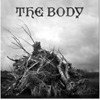 Compiling rare 7" and CDR tracks, this compilation is not for the meek. At nearly 80 minutes of shambling, broken guitar riffs and inhuman shrieks, fatigue sets in pretty quick. Taken in small doses, however, it’s the perfect thing to play when something needs to be loud and angry.
Compiling rare 7" and CDR tracks, this compilation is not for the meek. At nearly 80 minutes of shambling, broken guitar riffs and inhuman shrieks, fatigue sets in pretty quick. Taken in small doses, however, it’s the perfect thing to play when something needs to be loud and angry.
Trying to take this whole compilation in at once is about the same as trying to listen to Swans' Cop/Young God from beginning to end.It is an apt comparison, because both are these dissonant, hate-filled compositions that move along at such a slow pace, they almost feel frozen in place.With a tempo that matches that of much of Khanate's work, I don't think even the most dedicated fans could headbang to this.
This is exemplified on the opening "Always Waiting," a mix of pounding, sloppy riffs and raw, painfully shrieked vocals.It's got that fuck-all vibe of the best grindcore albums, but at the polar opposite pacing.The longer "Fails" is a bit more disciplined: even with its erratic rhythm section, the deep bassy blasts lead to a more structured feel, even if it's the perfect definition of "lurching."
There is a smattering of covers on here, most of which are impossible to link to their original.The cover of Body Count's "Cop Killer" is all dissonant big riffs and indecipherable shrieks; the only commonality between them is the machine gun/drum breakdown in the middle of the track.The cover of "Dead Cops," originally by MDC (sensing a theme here?) also slowly plods along.Somewhat reminiscent of the slower moments of Godflesh's debut EP, it comes together nicely with a great, treated drum sound later on.
While I'm not overly familiar with the original, the faster tempo of Crass' "Do They Owe Us A Living" indicates that they're at least closer together in approach, while the overdriven sound is so distorted it occasionally trails into noise territory.Similarly, the cover of Danzig's "Tired of Being Alive" keeps a bit of that strip club trashy blues sound from the original, even deconstructed to the barest caveman essentials.
With its occasionally questionable production quality and sheer brutality of its approach, this collection is best reserved for those moments when harsh, grating noise is warranted.It's a big, loud, violent blast that works quite well for what it is.Subtlety isn't an option here.
samples:
 
Read More
- Administrator
- Albums and Singles
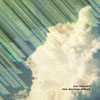 Following up 2009's Sever, this double LP follows a similar blueprint to that album, here spread across four long tracks. As a piece of sound art, each of these four pieces sound completely distinct from one another, but unified by Haynes’ simply wonderful use of tactile sonic textures that make his work so brilliant.
Following up 2009's Sever, this double LP follows a similar blueprint to that album, here spread across four long tracks. As a piece of sound art, each of these four pieces sound completely distinct from one another, but unified by Haynes’ simply wonderful use of tactile sonic textures that make his work so brilliant.
Each of these side-long pieces have different concepts and sources, but they work together.Linked through the use of various tape decay effects, contact mics, and field recordings, the finished project is a wonderfully cohesive suite of compositions.
"Ashes," originally part of a project to rescore two films, Jump Rope and Silent Snow, Secret Snow, appears with further work completed.A pastiche of deep, hollow ambience and crunchy, static-laden sounds, it is the most minimal of the pieces.It shifts into a decidedly darker realm with deep, harrowing passages of sound and bizarre, alien textures as it slithers to its conclusion.
Again working in sparser pastures, "Terminal," is sourced from a series of thermal vent and geyser recordings, resulting in a hiss-laden piece that somewhat resembles a cheap blank cassette played at maximum volumes.The distant geological rumbles and rattles make its pedigree clear, as does the white noise and rushing water that make the dying moments of the track some of the harshest on the record.
The two compositions on the second LP are noticeably different than those that precede it, focusing less on expansive ambience and more on carefully shaped and molded tones."Half-Life," for example, showcases Haynes' love of gurgling, tactile sounds, and they're paired with constant, shimmering tones that carefully oscillate between shrill and beautiful.
"Cold" once again utilizes the glistening tonal passages that "Half-Life" did, and makes them the centerpiece, resembling the hypnotic drones of the best Organum.With the occasional jarring outburst of shortwave radio static, it feels very dynamic, which becomes even more evident towards the end, where the sound is layered to a thick, gauzy cloud that demands attention without being too much.
Haynes' fondness for organic, breathing sonic textures that can be felt as easily as they can be heard is what initially attracted me to his work, and it's a trait that can be heard throughout The Decline Effect.His compositions reach beyond this, however, and the juxtaposition of expansive ambient drone on the first LP and the carefully shaped tones on the second solidify the brilliance here.The Decline Effect is of the best pieces of sound art this year, easily.
samples:
 
Read More
- Administrator
- Albums and Singles
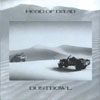 Easily their most well-known release, partially in part due to the Steve Albini production and Godflesh/Jesu's Justin Broadrick on drums, Dustbowl lives up to its legendary status, with the band perfecting the murky, hazy sound of LP. It’s rather unfair that the album is recognized just for those two individual's contributions, because the album as a whole is what is truly praise-worthy.
Easily their most well-known release, partially in part due to the Steve Albini production and Godflesh/Jesu's Justin Broadrick on drums, Dustbowl lives up to its legendary status, with the band perfecting the murky, hazy sound of LP. It’s rather unfair that the album is recognized just for those two individual's contributions, because the album as a whole is what is truly praise-worthy.
Mute/Blast First
The cover art and title are a great metaphor for the songs contained on Dustbowl.While LP was all black leather meth fueled motorcycle gangs, this is the sound of outlaw desert isolation.It is paranoia and sand, hallucinogens and violence.The references in "Tequila" to someone who has false papers and can "change your name, change your face" fits this ethos perfectly.
However, the album is as much Fistful of Dollars as it is Road Warrior:for all the post-apocalyptic dystopia there's a fair share of the American old west, presented through a distinctly post-industrial British filter.There's a mutant country twang to be heard on tracks like "108," and while it is buried in reverb and distortion, lyrics like "I'm gonna whip that stubborn horse" bring it to light.
Perhaps most well known on here, (due to Fear Factory's industrial metal cover) is "Dog Day Sunrise" which, like "Shadow Hills California" on LP, is one of the closest things the band ever came to pop in this era, but only in the sense that it is a catchy, earworm-type song.Fear Factory's version was adequate for what it was, but nothing touches the original.
The album is its weakest in a certain same-ness that pervades it.While on one hand it feels more conceptually and sonically cohesive than its predecessor did, it also feels like they took less chances.Again, this is a very minor critique that is the definition of nit-picking, but one I figured I should at least acknowledge.
It does, however, mix up the feel:while there might be a similar brown sonic palette of shrill guitars and distorted bass used throughout, the metallic pounding "Skin Drill" and "Bugged" convey a different vibe than the more dirgy, noise rock of "Cult of Coats" and "Adrenecide."It is not as drastic as the funeral drone of "White Bastard" and the thrash of "Snuff Rider MC," both appearing together on LP.
In the end, however, Dustbowl is the better album.While there are a few moments across the 14 tracks that aren’t as memorable as the taut, concise LP, the overall greater level of polish and songwriting that appear here push it ahead, just by a nose.Both albums are still, in my opinion, essential.
I should acknowledge that Steven Hess’ recent Facebook love for this album is what motivated me to revisit Dustbowl as well as LP.Having owned them for a number of years, it was great to pull them out again and hear them in their entirety.
samples:
 
Read More

